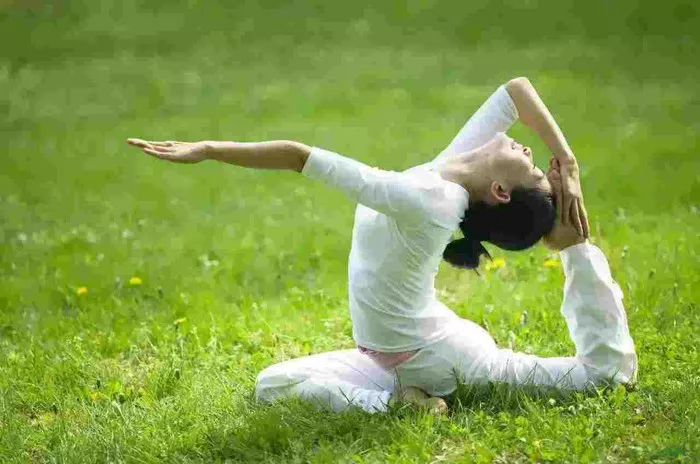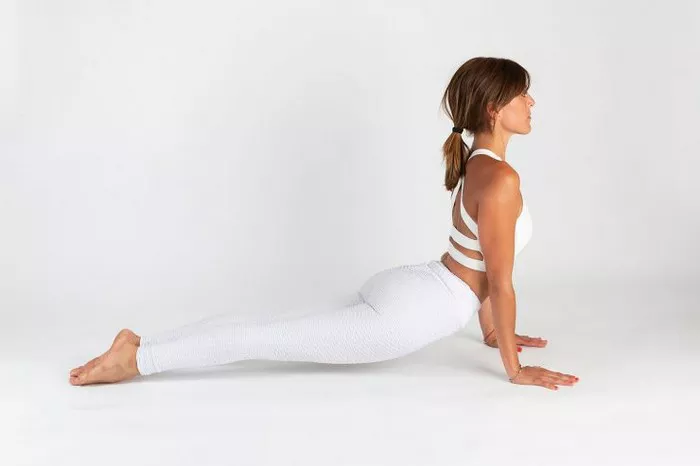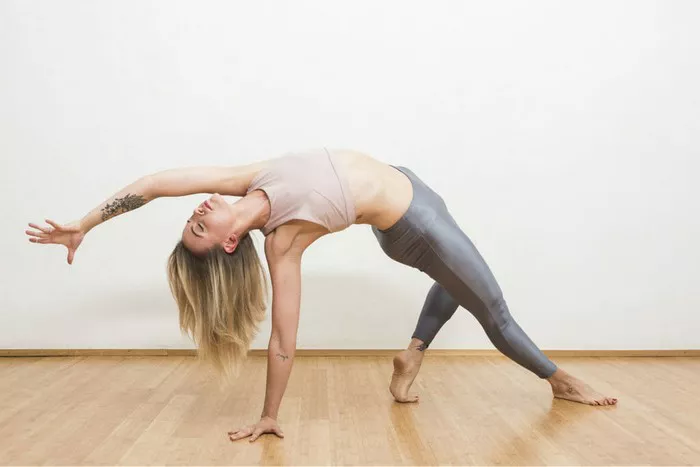Osteoporosis is a condition characterized by weakened bones, making them more susceptible to fractures and breaks. While yoga is often recommended for its numerous health benefits, certain poses can potentially exacerbate the risk of injury for individuals with osteoporosis. Understanding which poses to avoid is crucial for maintaining bone health and preventing fractures. In this article, we will explore six yoga poses that individuals with osteoporosis should steer clear of to safeguard their well-being.
1. Forward Bends
Forward bends, such as Uttanasana (Standing Forward Bend) and Paschimottanasana (Seated Forward Bend), can put excessive strain on the spine, particularly in individuals with osteoporosis. These poses involve flexing the spine forward, which may increase the risk of vertebral compression fractures. Individuals with osteoporosis already have weakened bones, and the added pressure from forward bends can further compromise spinal integrity. Instead of deep forward bends, individuals with osteoporosis can opt for gentler alternatives that focus on elongating the spine without excessive flexion, such as Cat-Cow pose or gentle spinal twists.
2. Twists
Twisting poses, such as Ardha Matsyendrasana (Half Lord of the Fishes Pose) and Parivrtta Trikonasana (Revolved Triangle Pose), can place strain on the spine and potentially increase the risk of vertebral fractures in individuals with osteoporosis. Twists involve rotating the spine, which may be challenging for those with compromised bone density. Additionally, deep twists can put pressure on the intervertebral discs, which may already be weakened in individuals with osteoporosis. Instead of deep twists, individuals with osteoporosis can practice gentle spinal rotations while maintaining proper alignment and avoiding excessive torque on the spine.
3. High-Impact Poses
Poses that involve jumping or high-impact movements, such as Jumping Poses or Handstands, should be avoided by individuals with osteoporosis. These poses can increase the risk of falls and fractures, especially for those with weakened bones. High-impact movements subject the bones to sudden and excessive force, which may lead to fractures, particularly in weight-bearing joints like the wrists, hips, and spine. Instead of high-impact poses, individuals with osteoporosis can focus on low-impact activities that promote balance, strength, and flexibility, such as gentle standing poses and supported inversions.
4. Deep Backbends
Deep backbends, such as Urdhva Dhanurasana (Upward Bow Pose) and Kapotasana (Pigeon Pose), can place significant pressure on the spine and may increase the risk of compression fractures in individuals with osteoporosis. These poses involve extending the spine backward, which can strain the vertebrae and potentially lead to fractures, especially in those with weakened bones. Deep backbends also require a considerable amount of flexibility and strength, which may be challenging for individuals with osteoporosis. Instead of deep backbends, individuals with osteoporosis can practice gentle backbends with proper alignment and support, focusing on lengthening the spine without excessive compression.
5. Inversions
Inversions, such as Headstand and Shoulderstand, should be approached with caution by individuals with osteoporosis due to the increased risk of falls and fractures. Inversions require substantial strength and balance, which may be compromised in individuals with osteoporosis. Additionally, the pressure exerted on the neck and spine in inverted poses can be detrimental to bone health, especially for those with weakened bones. Individuals with osteoporosis should avoid full inversions and instead focus on supported inversions with props, such as Legs-Up-the-Wall Pose or Supported Bridge Pose, to reap the benefits of inversion without the risk of injury.
6. Poses with Forward Head Posture
Poses that involve forward head posture, such as Plow Pose (Halasana) and Headstand (Sirsasana), should be avoided by individuals with osteoporosis to prevent strain on the cervical spine and reduce the risk of fractures. Forward head posture can exacerbate spinal misalignment and increase the pressure on the vertebrae, particularly in individuals with weakened bones. These poses also require a significant amount of neck strength and flexibility, which may be challenging for individuals with osteoporosis. Instead of poses with forward head posture, individuals with osteoporosis can focus on poses that promote proper spinal alignment, such as Mountain Pose (Tadasana) and gentle neck stretches.
Conclusion
In conclusion, while yoga offers numerous benefits for overall health and well-being, individuals with osteoporosis should be mindful of certain poses that may exacerbate the risk of fractures and injuries. By avoiding poses that place excessive strain on the spine, joints, and bones, individuals with osteoporosis can continue to enjoy the physical and mental benefits of yoga while safeguarding their bone health. Consulting with a qualified yoga instructor or healthcare provider for personalized guidance and modifications is essential for a safe and effective yoga practice. With proper precautions and awareness, individuals with osteoporosis can still experience the transformative power of yoga while prioritizing their bone health and overall well-being.
FAQs:
Can I do yoga if I have osteoporosis of the spine?
Yes, yoga can be adapted for individuals with osteoporosis of the spine, but it’s essential to proceed with caution and consult with a healthcare professional or a qualified yoga instructor who has experience working with osteoporosis. Gentle, modified poses that focus on improving posture, balance, and flexibility can be beneficial. Avoiding forward bends and twists that put excessive strain on the spine is crucial. Instead, opt for poses that promote spinal extension and strengthen the muscles supporting the spine. With proper modifications and guidance, yoga can help improve bone density, posture, and overall well-being for individuals with osteoporosis.
What exercises are not good for osteoporosis?
Exercises that involve repetitive or high-impact movements, such as jumping, running, or heavy weightlifting, can increase the risk of fractures for individuals with osteoporosis. Additionally, activities that involve excessive bending, twisting, or forward flexion of the spine should be avoided, as they can strain weakened bones and increase the likelihood of compression fractures. Examples include full forward bends, deep twists, and high-impact activities like aerobics or tennis. Instead, focus on low-impact exercises that improve balance, posture, and muscle strength without putting undue stress on the bones, such as walking, swimming, gentle yoga, or tai chi.
Is triangle pose safe for osteoporosis?
Triangle pose (Trikonasana) can be safe for individuals with osteoporosis if modified appropriately and practiced with caution. In its traditional form, triangle pose involves a deep lateral stretch and spinal rotation, which may not be suitable for individuals with compromised bone density, especially in the spine. To make the pose safer, consider using props like a yoga block to support the hand or practicing a modified version with less intense stretching. Focus on engaging the muscles around the spine and maintaining a neutral alignment to reduce the risk of injury. It’s crucial to listen to your body, avoid overexertion, and consult with a healthcare professional or experienced yoga instructor for personalized guidance.
What type of yoga is best for osteoporosis?
Yoga styles that emphasize gentle, controlled movements, and focus on improving posture, balance, and flexibility are generally considered best for individuals with osteoporosis. Hatha yoga, restorative yoga, and gentle yoga classes tailored specifically for osteoporosis are excellent choices. These styles typically include poses that promote bone strength and alignment without putting excessive stress on the spine or joints. Poses may be modified with props like blocks or straps to provide additional support and reduce the risk of injury. Additionally, practices that incorporate breathing techniques and relaxation can help reduce stress and improve overall well-being, which is beneficial for bone health. Always consult with a healthcare professional before starting any new exercise program, and consider working with a qualified yoga instructor who has experience adapting poses for osteoporosis.





















